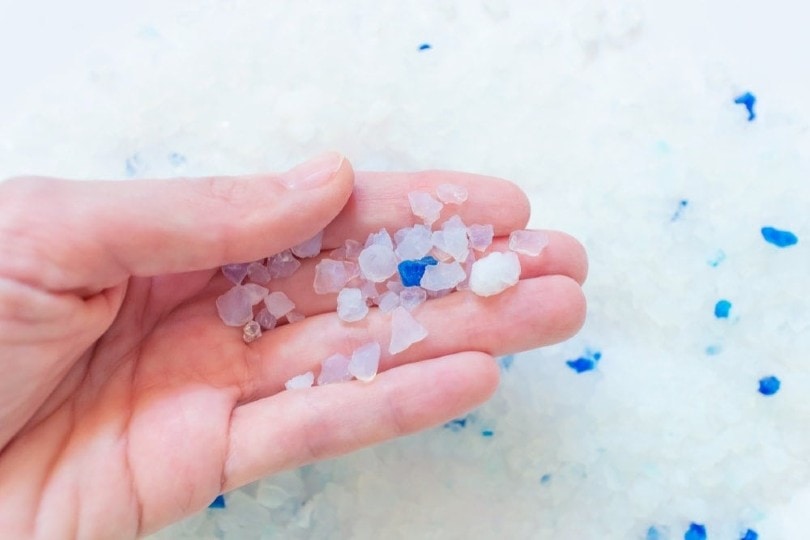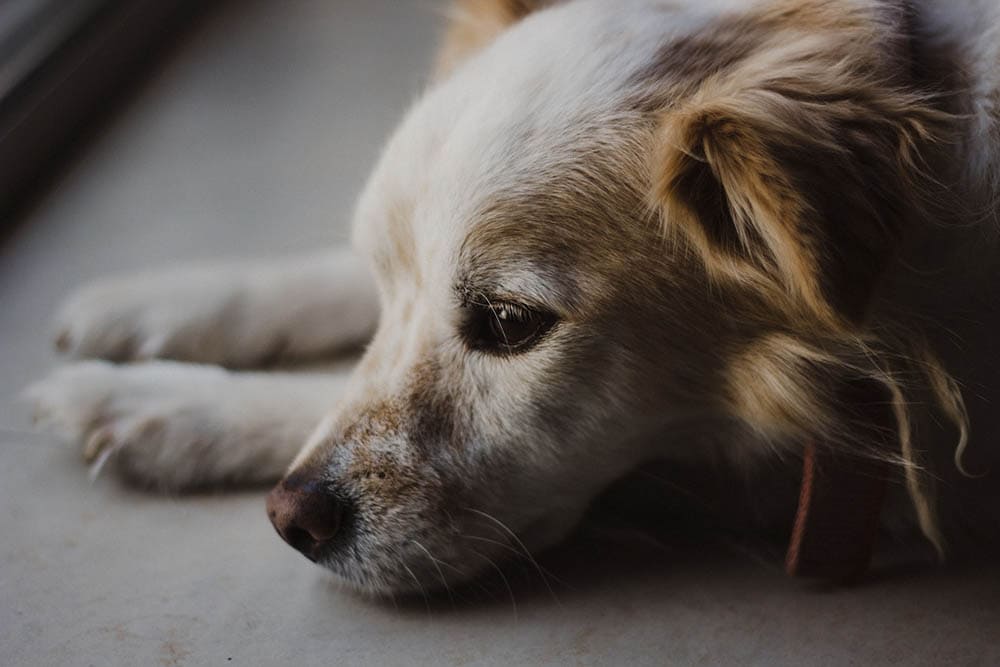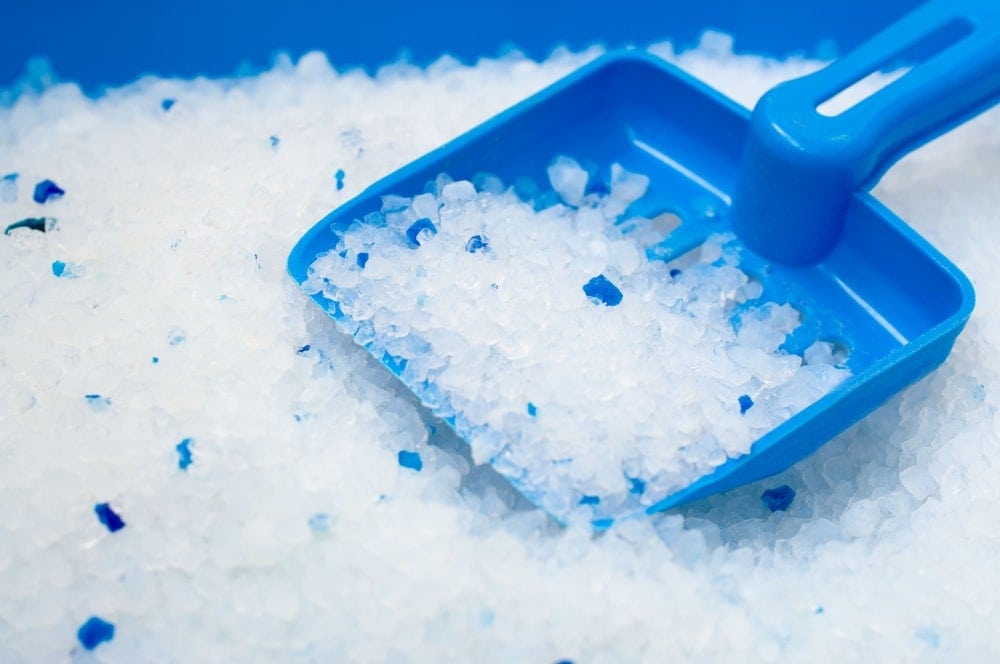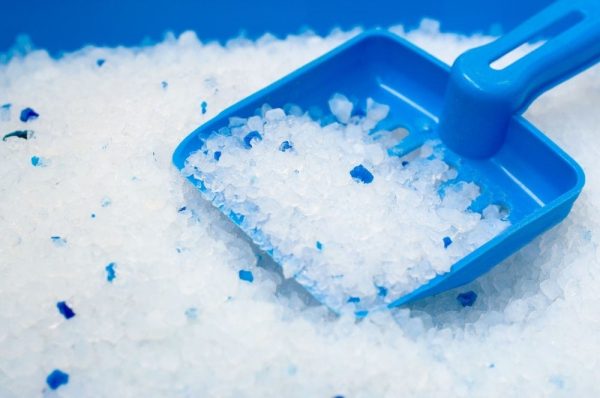Dogs explore the world through their noses, and their curiosity can sometimes get them into trouble. Therefore, pet owners that live with both dogs and cats have to be careful with their litter box placements because dogs can end up getting to them and licking up cat litter. While crystal cat litter is non-toxic to cats and dogs, you should still contact your veterinarian if your dog ingests any cat litter.
Is Crystal Cat Litter Toxic to Dogs?
Crystal cat litter is made with silica gel and sodium silicate sand. These compounds are highly porous and absorbent. It can absorb moisture up to 40 times its weight. For safety reasons, crystal cat litter is made with amorphous silica gel, which is a type of silica gel that’s non-toxic to both humans and pets.
So, if your dog nibbles on a few pieces of crystal cat litter, it won’t experience poisoning. However, it is still essential to have concern because other factors can pose a risk to your dog’s health.

What To Do If Your Dog Eats Cat Litter Crystals
The first thing you want to do is contact your veterinarian if you notice that your dog has eaten cat litter crystals. If your dog ate a large amount of cat litter crystals, it might experience constipation because the litter has absorbed too much moisture. Make sure to consult with your veterinarian before you give your dog any laxatives.
Another reason to contact your vet is that your dog could have also ingested cat feces.
Cat litter boxes can be contaminated with the toxoplasma gondii parasite, a common parasite found in cat feces. Dogs infected with this parasite can contract toxoplasmosis and experience flu-like symptoms. Most dogs face a generally favorable prognosis, but dogs with weakened immune systems have a more difficult time fighting off the parasite and can face more severe symptoms that warrant hospitalizations.
So, make sure to call your veterinarian for further instructions on caring for your dog. It will be helpful for your veterinarian to get an estimated amount of cat litter your dog ate and at what time.
If your veterinarian doesn’t require a visit, keep monitoring your dog’s condition for the next few days. Most dogs can pass the crystal cat litter without any digestive issues. However, some may experience gastrointestinal upset. So, be on the lookout for the following symptoms:
- Blood in vomit or stool
- Diarrhea
- Fatigue
- Loss of appetite
- Vomiting
If your dog shows signs of an upset stomach, refrain from feeding it food for up to 12 hours. Once your dog stops vomiting and having diarrhea, you can introduce a small amount of easily digestible, bland food, such as cooked rice or pumpkin puree. Then, you can slowly reintroduce your dog to its regular food throughout the week.
If at any time, you see that your dog has flu-like symptoms, an upset stomach, or constipation, contact your veterinarian with updates and a request for further care instructions. Veterinarians can provide medication to alleviate symptoms and more intensive care, if necessary.

How To Keep Your Dog Out of the Litter Box
The best way to keep your dog out of the litter box is to place it in unreachable places. Cats will also appreciate the added efforts for more privacy.
You can place litter boxes on elevated surfaces where your dog can’t reach them. Litter boxes with hoods can also prevent dogs from digging into cat litter, or you can try hiding them in cabinets specially designed to hold litter boxes. If you have time to do a DIY project, there are plenty of DIY cat litter cabinet plans that can prevent dogs from getting to litter boxes.
If your living space doesn’t allow much room for relocating your litter box, you can always try switching to a different type of cat litter to see if it’s less appealing for your dog to sniff out. However, there’s no guarantee that this switch will keep your dog out of the litter box.
Conclusion
While cat litter crystals are non-toxic to dogs, you should still play it safe and contact your veterinarian if your dog eats it. Carefully monitor your dog’s condition and look for symptoms of toxoplasmosis, constipation, or an upset stomach. Make sure also to relocate your cat’s litter box to prevent any recurring incidents.
See also:
Featured Image Credit: Valentina Zavrazhina, Shutterstock










